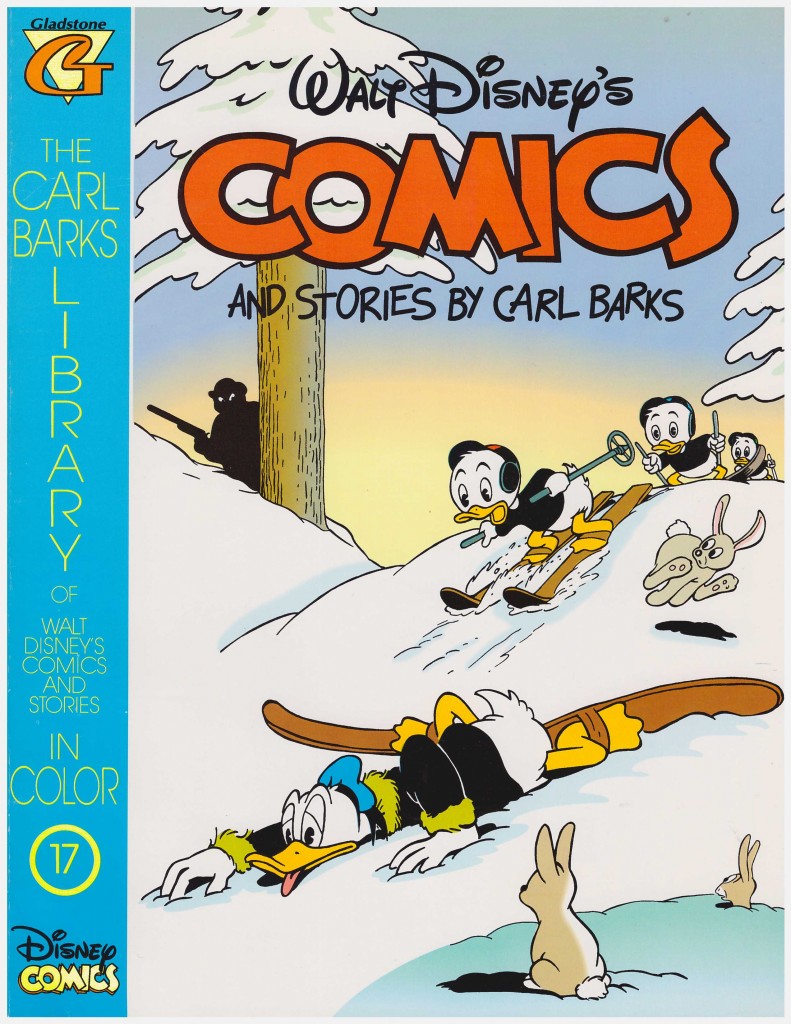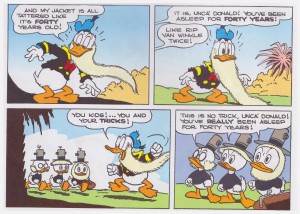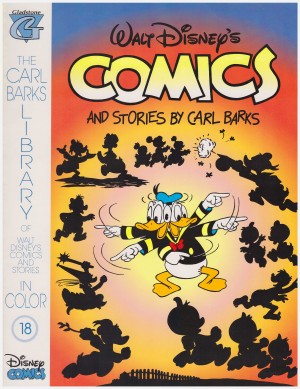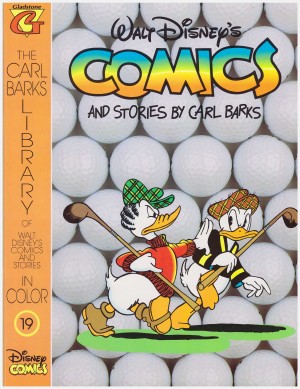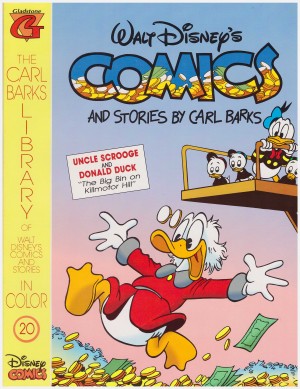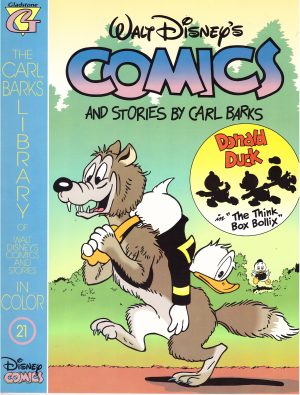Review by Frank Plowright
In this volume’s final story, originally printed in early 1951, Carl Barks creates another aspect of the ducks’ world that would provide dozens of story ideas, both for himself and others. Modelled on the boy scouts, Huey Dewey and Louie are members of the Junior Woodchucks, an outdoors organisation that teaches kids country skills with over-riding principles of honesty and fair play. The preposterously useful Junior Woodchucks Guidebook wouldn’t appear for another three years, yet the structure is otherwise fully formed, portrayed pretty well as it would be throughout Barks’ run.
Barks often tailored his stories to incorporate the seasons in which they’d be published, so the opener, from January 1950, has Huey, Dewey and Louie enjoying winter sports, and Donald wanting to head south for warmer weather. Where the story goes from there is strange and wonderful.
Having produced a ten page story every months almost from his start on Walt Disney’s Comics and Stories, he only managed three in 1950. The compensation was several longer Donald Duck stories (reprinted in Walt Disney’s Donald Duck Adventures by Carl Barks), but as family problems also took their toll, it took a while for him to adjust to the new schedule.
The cartooning is, as ever, brilliant. Barks really enjoys himself providing a straight-backed government agent with a chin you could land helicopters on, hallucinations caused by inhaling petrol fumes, a wonderfully smug Scrooge, and the return of the preposterous over-sized dog Bolivar.
Uncle Scrooge makes his first definitive appearance in the ten page strips as the mean old skinflint to whom Donald owes four dollars. It’s a story that leads to several wild and unpredictable places, as does yet another conflict with Gladstone over Daisy. So, there may have been a larger than usual gap between the stories when originally published, but it made no difference to the quality.
